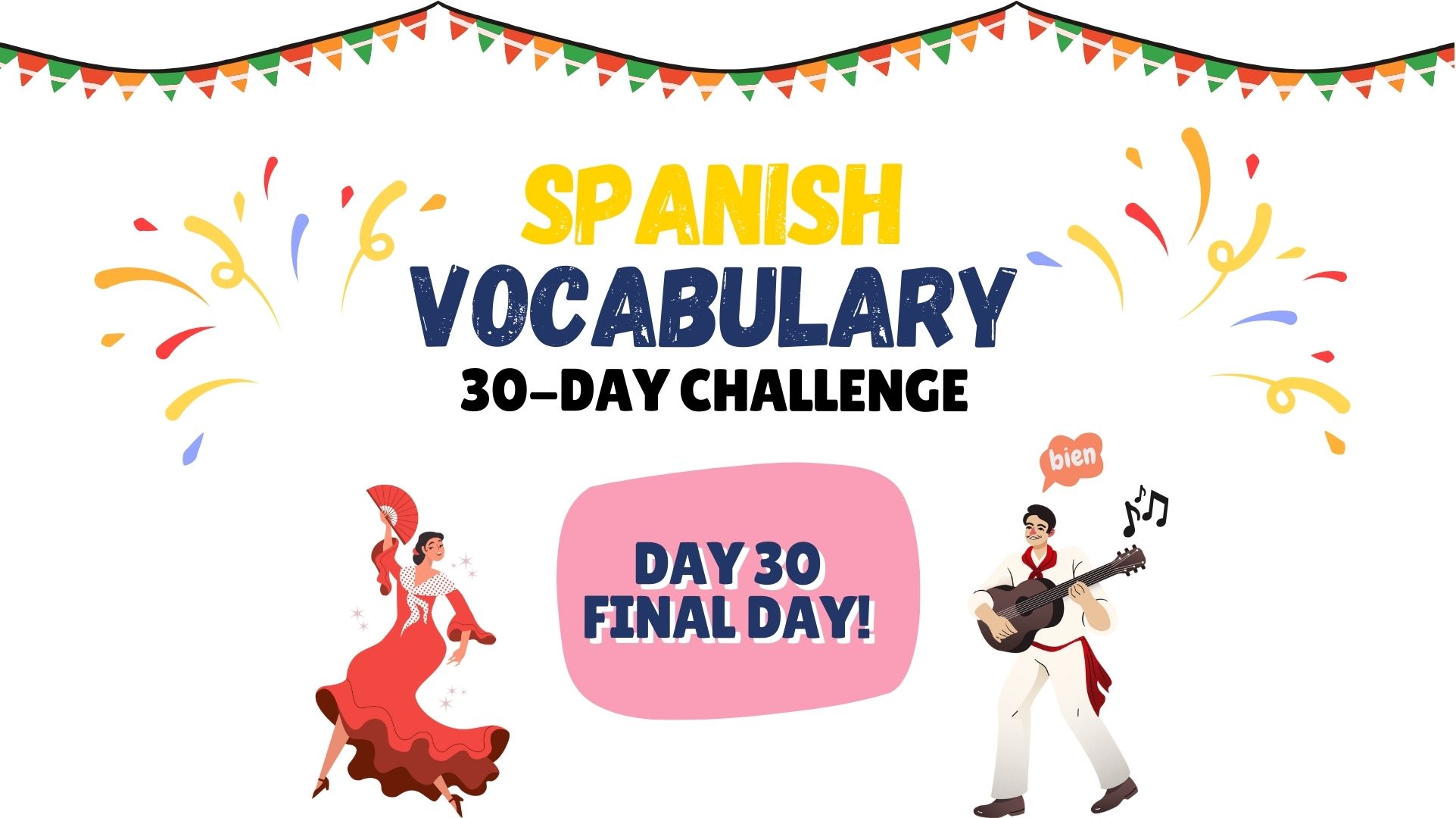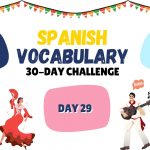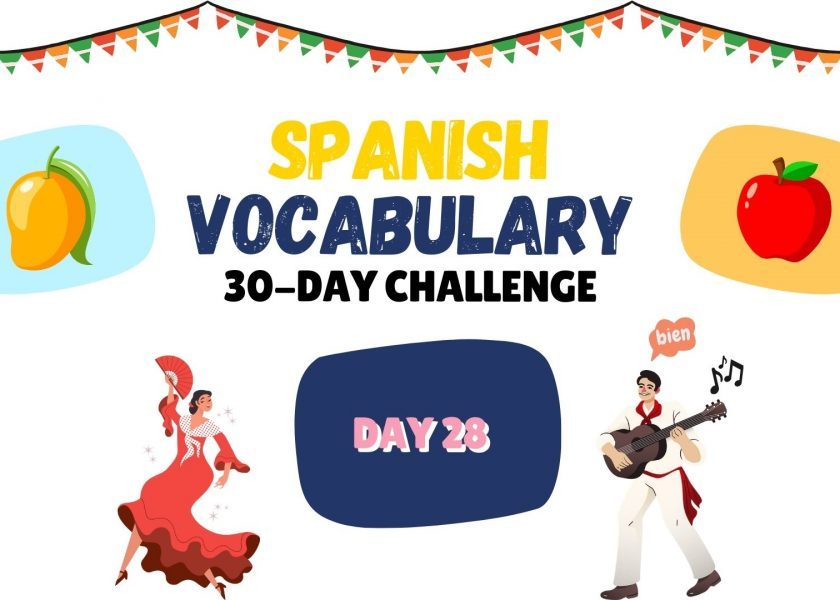
Day 30 of the 30 Day Spanish Vocabulary Challenge! La carnicería (Butcher’s)
¡Felicidades, amigos! Congratulations on reaching the final day of our 30-day Spanish vocabulary challenge! Today, we’re diving into the world of meats and seafood as we learn Spanish words essential for any food market or restaurant visit.
Let’s savor this last serving of foreign language vocabulary:
| El carnicero / La carnicera eyl kaar-nee-sey-ro / laa kaar-nee-sey-raa | Butcher |
| El avión eyl avee-yawn | Plane |
| La carne laa kaar-ney | Meat |
| El paté eyl paa-tey (‘t’ has a soft sound) | Pâté |
| La carne de vaca laa kaar-ney dey vaa-kaa (‘d’ has a soft sound) | Beef |
| El cordero eyl kor-dey-ro (‘d’ has a soft sound) | Lamb |
| La carne de cerdo laa kaar-ney dey seyr-do (‘d’ has a soft sound) | Pork |
| La gamba laa gaam-baa | Prawn |
| El pez eyl peyz | Fish |
| La langosta laa laan-gos-taa (‘t’ has a soft sound) | Lobster |
| El cangrejo eyl kaan-grey-kho | Crab |
La vieira | Scallop |
Now, let’s take a small quiz to check how much you remember and after that – you will be finally done with the 30 day challenge!
- If you want a beef steak, you’d ask for:
a) La carne de cerdo
b) La carne de vaca
c) El cordero
d) El pez - Which of these is a seafood item?
a) El paté
b) La carne
c) El cordero
d) La gamba - What’s the Spanish word for “fish”?
a) La langosta
b) El pez
c) El cangrejo
d) La vieira - If you’re craving bacon, you’d look for:
a) La carne de vaca
b) El cordero
c) La carne de cerdo
d) El paté - Which word means “lobster” in Spanish?
a) El cangrejo
b) La gamba
c) La langosta
d) La vieira - What’s the Spanish term for “lamb”?
a) El cordero
b) La carne de vaca
c) La carne de cerdo
d) El paté
Let’s check your answers now!
- b
- d
- b
- c
- c
- a
As we conclude our journey in learning Spanish vocabulary, let’s reflect on how far you’ve come. From household items to fruits and vegetables, and now to meats and seafood, you’ve built an impressive foundation of Spanish words. This diverse vocabulary will serve you well in countless real-life situations.
Remember, to truly learn Spanish, consistent practice is key. Here are some final tips to keep your language skills sizzling:
- Use your new vocabulary daily. Try describing your meals in Spanish or planning a Spanish-only grocery shopping trip, or naming the vehicles you see on the road, calling out the name of the room you walk into, or even reminding yourself what day it is today in Spanish!
- Some of the conversational vocabulary that you have acquired, use it with a friend or family member. Speak out loud. Even if you are wrong, it’s alright. Saying them aloud teaches you how to speak the words and phrases better too.
- Challenge yourself to learn related verbs and adjectives. For instance, the verb ‘estar’ means ‘to be’ or ‘comer’ means ‘to eat’.
- Immerse yourself in Spanish-language media. Watch tv shows, read books, listen to Spanish music, and try to identify words you have learnt.
- Practice speaking with native speakers or language exchange partners (if you can find someone native!). Nothing beats real conversation for cementing your learning.
As you continue your Spanish language journey, remember that every word you learn is a step towards fluency. The vocabulary you’ve acquired over these 30 days is just the beginning. Keep exploring, keep practicing, and most importantly, keep enjoying the process of discovering a new language and culture.
Congratulations on your dedication and success! Your commitment to expanding your foreign language vocabulary is truly commendable. Whether you’re planning a trip to a Spanish-speaking country, aiming for business fluency, or simply enriching your mind, the skills you’ve developed will serve you well.
Remember, language learning is a lifelong journey. Every conversation, every new word, every small victory adds up. So keep going, keep growing, and most importantly, keep enjoying your Spanish adventure!
¡Hasta luego y buena suerte en tu viaje lingüístico! See you later and good luck on your language journey!



